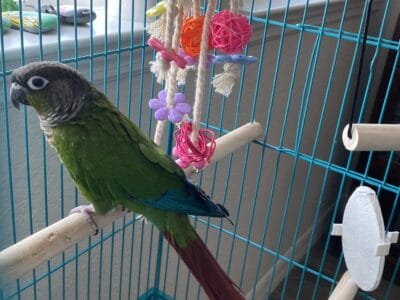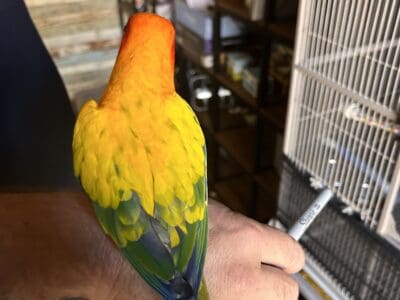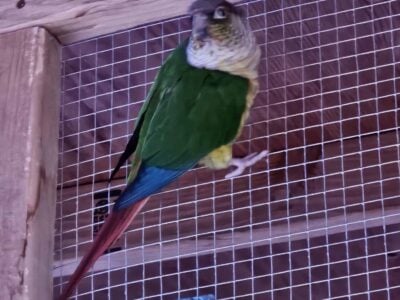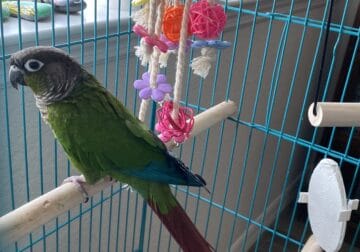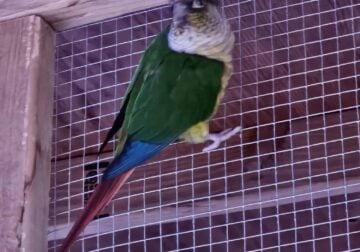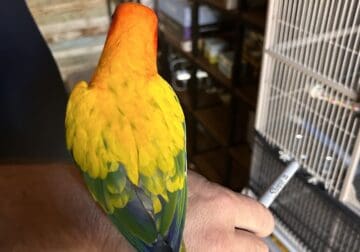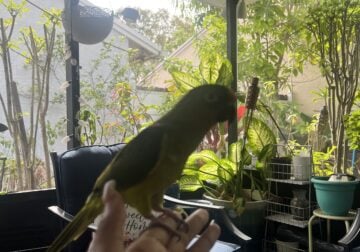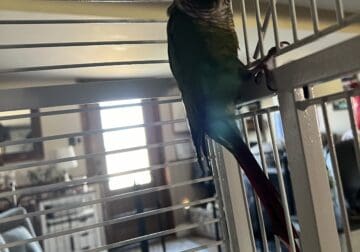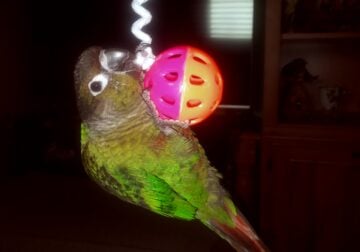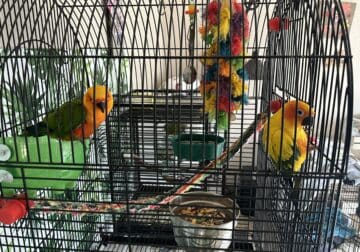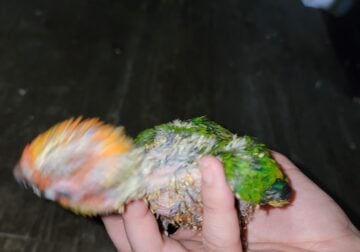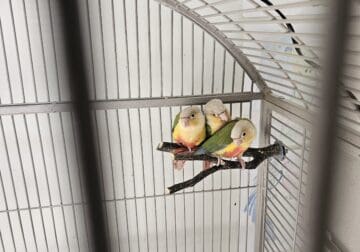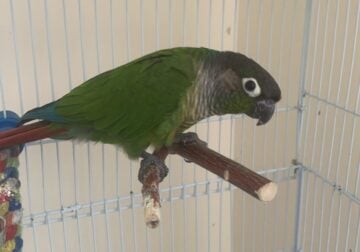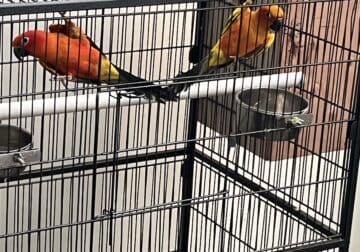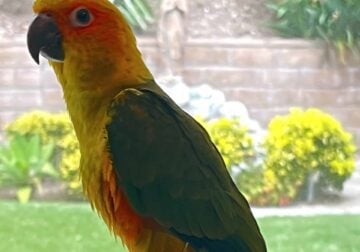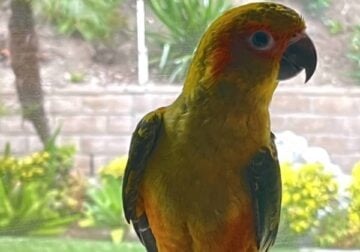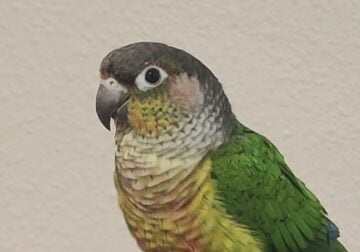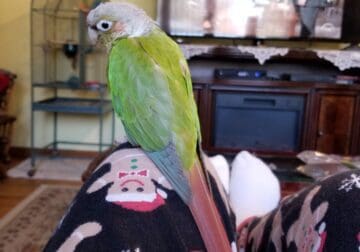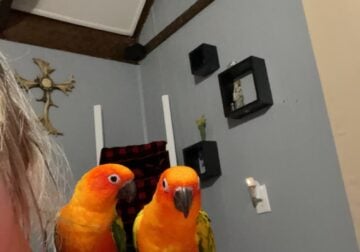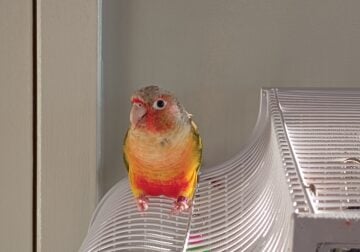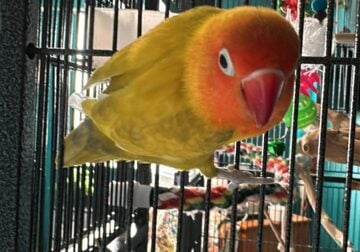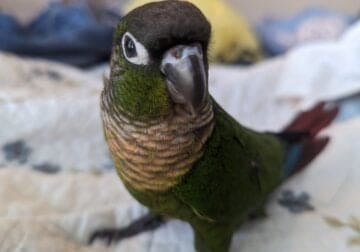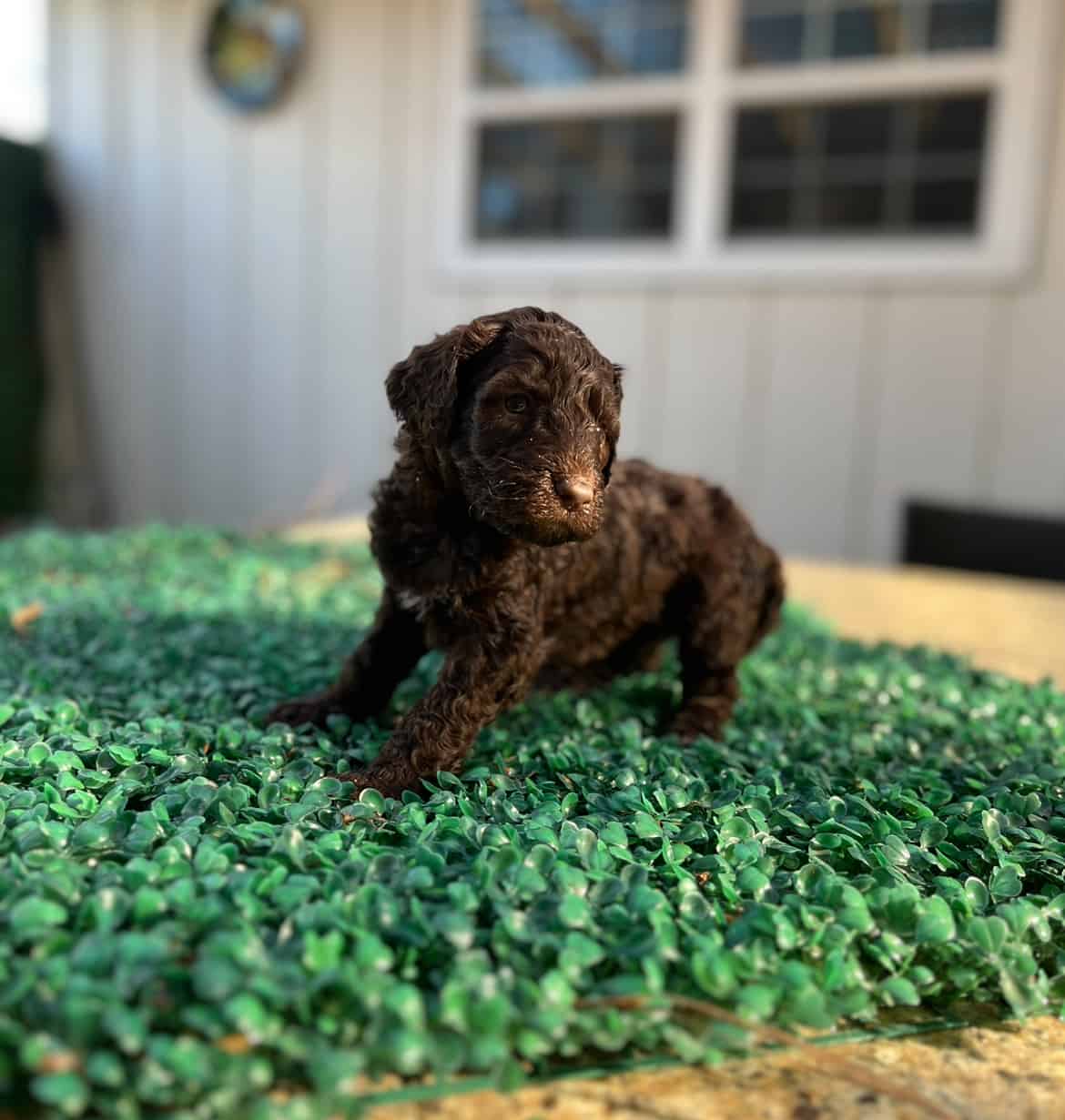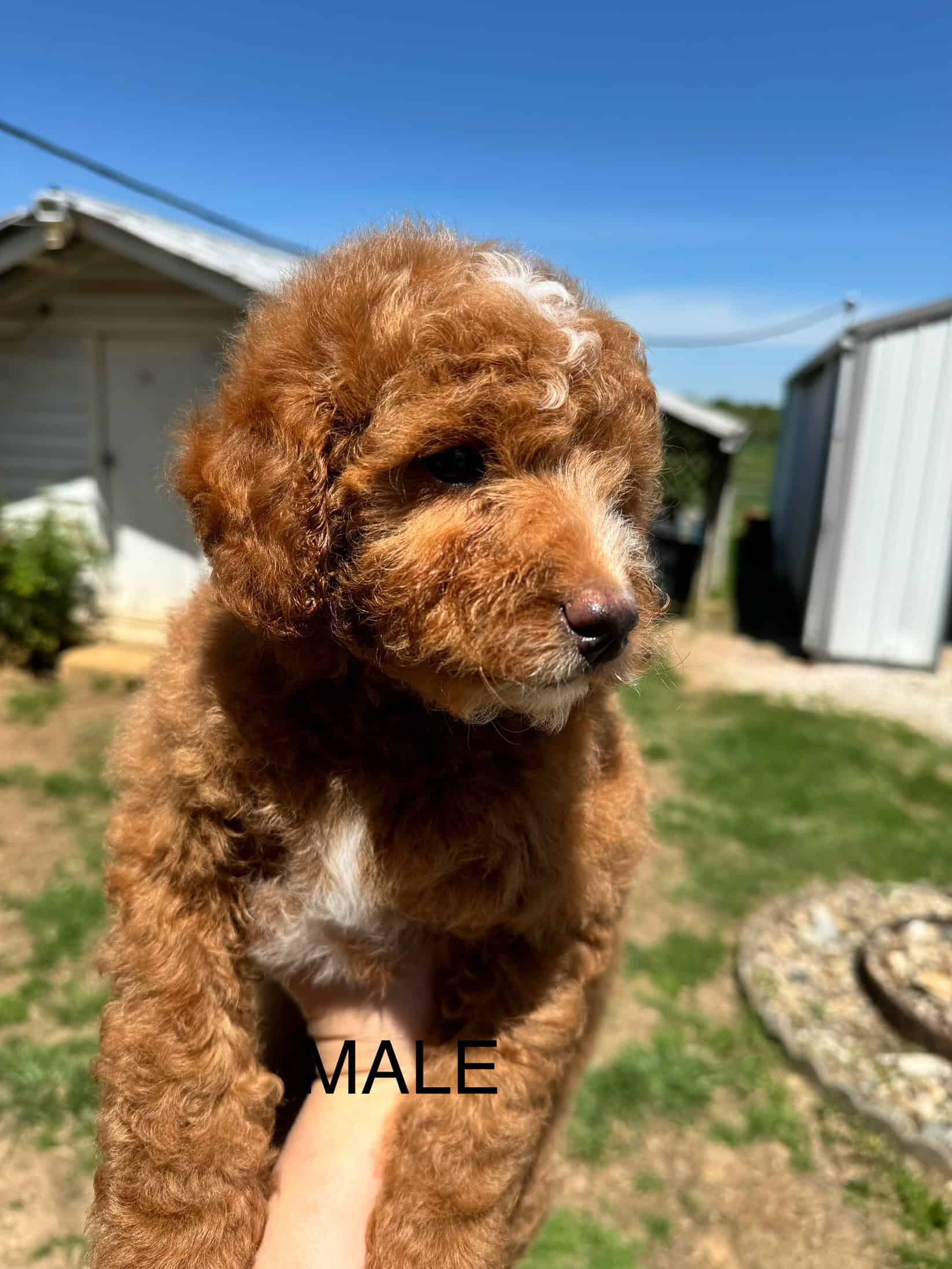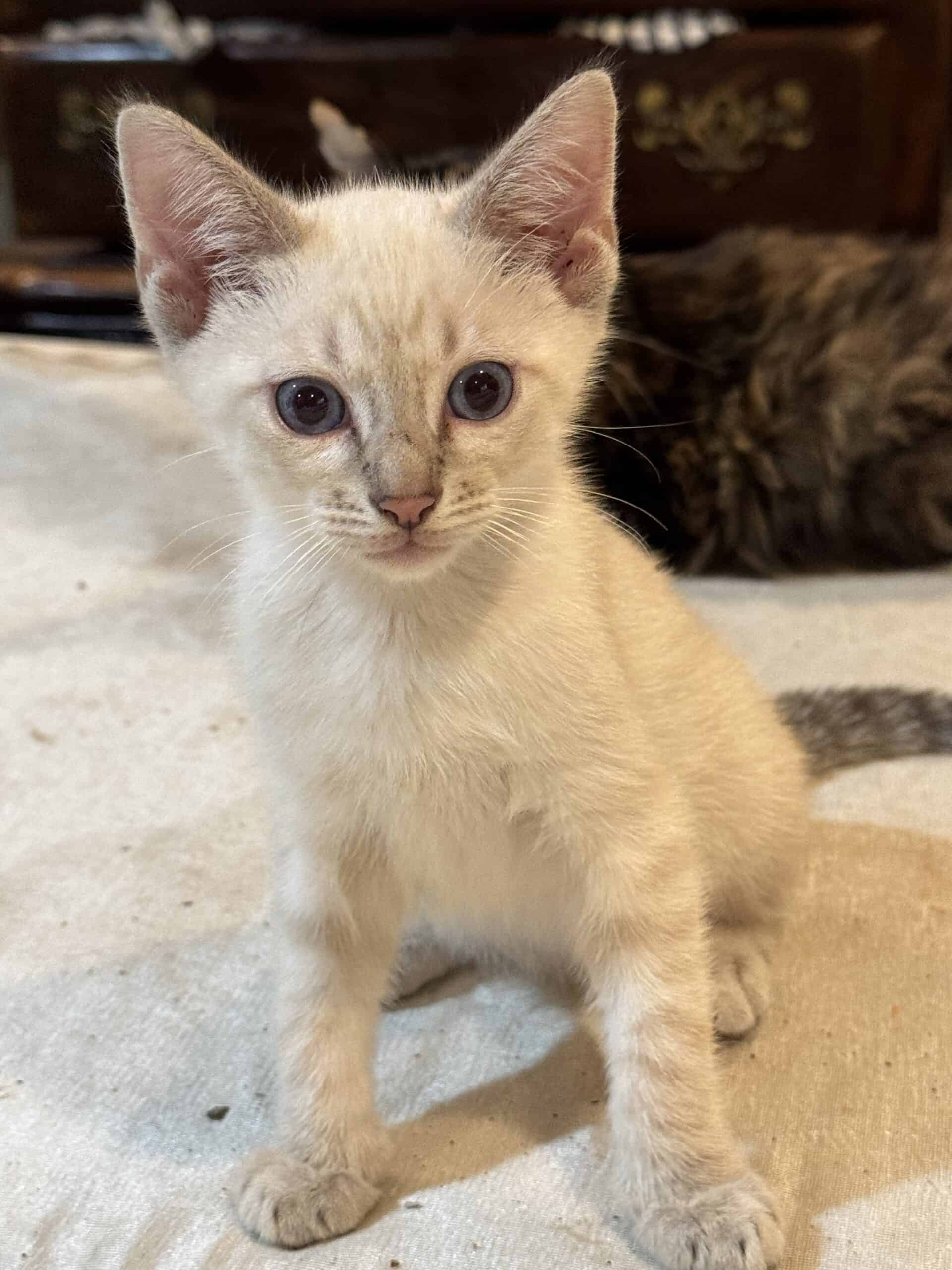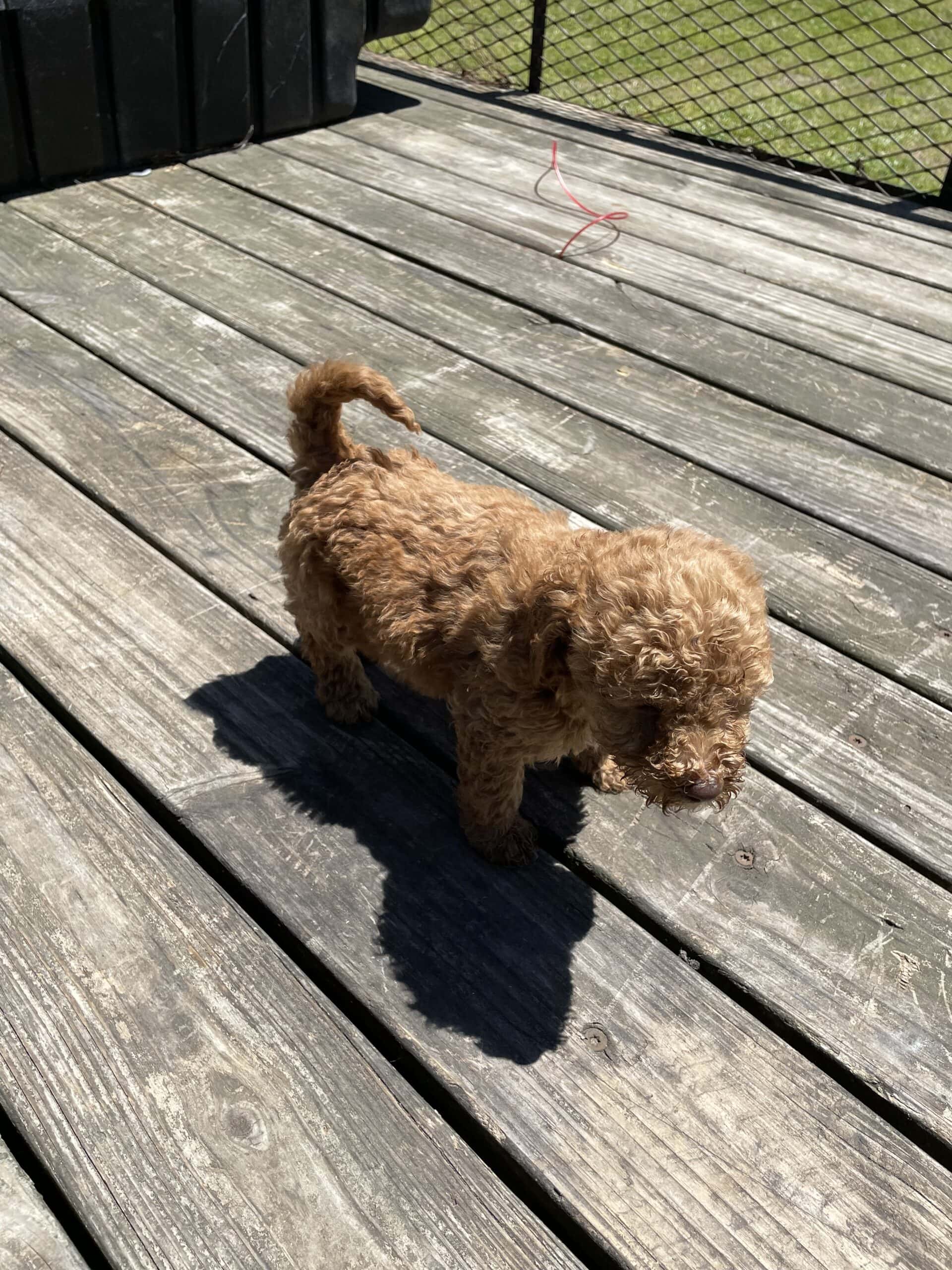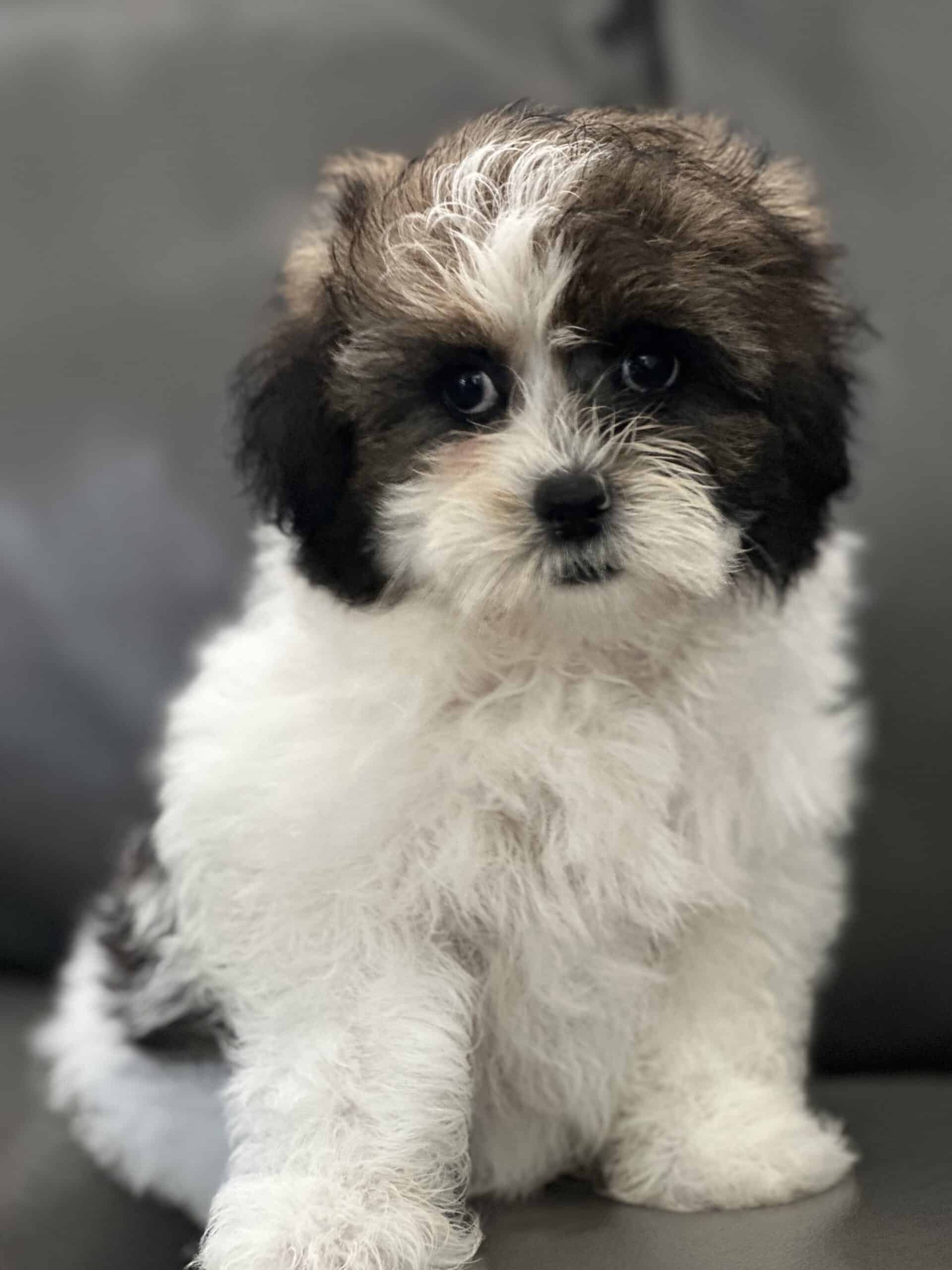Conures for Sale: Tiny Feathered Friend, Huge Personality
When you see a sign that says, “Conures for sale near me,” your first thought should be the time you will have to set aside every day for a bird. Conures are among the most delightful and colorful pets. Generally classified as medium-sized parrots, conures possess many of the personality quirks you might love in a macaw. Their clownish ways, intelligence, and affection come in a manageable package that even children can usually enjoy. A conure might be the pet for you if you have the time to give it plenty of attention, the patience to engage in daily training, and the willingness to research and learn about the extensive husbandry requirements.
Overview of Conures
Description
You may have a picture in your mind when you hear the word conure, but the family encompasses a large group. Most but not all have vividly-colored plumage. They also frequently have loud, vivacious, and interactive personalities.
Conures are considered large parakeets. However, not every parakeet is a conure. Conures are characterized by slender bodies with tapered tails, although not all of them are closely related. Some of them have long tails and others are short-tailed. Several genera include popular pet species. One genus, Aratinga, is so named because of the conure’s resemblance in appearance and temperament to a miniature macaw. This and the Pyrrurha genus hold the largest numbers of pet conures. Other pet conure genera follow.
- Leptosittaca
- Nandayus
- Ognorhynchus
- Enicognathus
- Cyanoliseus
Choosing the Right Conure for Sale
You can choose among the different species of conures based on size, appearance, and price. Regardless of your preferences, you should judge all birds by certain criteria.
- Bright and clean feathers
- Shiny alert eyes
- Clear nares and cere – nares are the openings (comparable to your nostrils) and the cere the bulbous fleshy gland at the base of the upper beak
- Clean living conditions – evaluate just as you would a puppy or kitten
- Active and outgoing – avoid a frightened or nervous bird that will not investigate you and its environment; offer toys and interact with the bird if you are able
- Weaned – hatchlings do not drink milk but their parents feed them until they are a certain age (12 to 24 weeks); only choose young birds that can eat independently
History of Conures for Sale
The history of captivity in exotic birds seems to have paralleled the increased interest in purebred dogs in Europe in the 1800s. An explosion in pet birds was seen in the late nineteenth century and expanded into America into the early 1900s. Captive-bred conure hatchlings appeared as early as the 1930s in the US. People’s fascination with pet birds remains high and with it has come an expanding knowledge base on care and health. The conure’s natural habitat is the Americas with different species living from Mexico to Chile and even Cuba and the Caribbean. At least one species has become naturalized in California. Captive breeding and restrictions on imports seek to preserve wild populations.
Types of Conures
If you decide to add a conure to your home, you will have a seemingly endless selection of pet birds.
Nanday Conure or Black-Hooded Parakeet (Aratinga nenday)
- Size: 12 inches long
- Colors: green body with some blue on the tail and breast, black head and cheeks
- Native range: wetlands of Brazil, Bolivia, and Argentina
- Life expectancy: 25 years
- Training: tricks, can speak words but more often whistles, chirps, and imitates sounds
- Activity: active, extremely social, and loud
- Temperament: needs a lot of attention, can be nippy with a strong beak
Dusky-Headed Conure (Aratinga weddellii)
- Size: 12 inches long
- Colors: dull green body, gray head
- Native range: southeastern Colombia south to eastern Ecuador, Brazil, Bolivia, and Peru; has expanded into California and Texas
- Life expectancy: 35 to 40 years
- Training: can develop a vocabulary of 20 or more words, makes calls and imitates sounds
- Activity: active, social, relatively quiet; most active in the early morning and late afternoon
- Temperament: sweet and loving
Half-Moon Conure or Orange-Fronted Conure(Aratinga canicularis changed to Eupsittula canicularis)
- Size: 9.5 inches long
- Colors: bright green with emerald on back and wings, orange band across blue forehead
- Native range: southwestern Mexico south to Costa Rica
- Life expectancy: 20 years
- Training: tricks, does not talk much
- Activity: active, social, vocal but low volume
- Temperament: need a lot of social interaction, intelligent, need mental stimulation, excitable
Jenday Conure (Aratinga jendaya)
- Size: 12 inches long
- Colors: yellow-orange body, yellow head with orange patches, green on wings and back, iridescent blue on tail and rims of the wings
- Native range: woodland of northeastern Brazil
- Life expectancy: 30+ years
- Training: tricks, does not typically talk much, mimics household noises
- Activity: energetic
- Temperament: smart, loving, cuddly, good with children, playful
Sun Conures for sale (Aratinga solstitialis)
- Size: 12 inches long
- Colors: yellow-orange body with mottled green
- Native range: northern Brazil, Venezuela, and Guyana
- Life expectancy: 20 years
- Training: talking ability low, mimics household noises, learns tricks
- Activity: high, very loud
- Temperament: Affectionate, cuddly, can be nippy with careless children
Green-Cheeked Conure (Pyrrhura molinae)
- Size: 10 inches long
- Colors: olive green with red in tail, bright green on backs, white ring around neck, black feathers on head, green cheeks, red patch on chest, maroon or blue tail
- Native range: Bolivia, Brazil, Argentina, and Paraguay
- Life expectancy: 30+ years
- Training: tricks, rare individuals learn a lot of words, mimics
- Activity: calls are less frequent and quieter than other conures
- Temperament: good-natured, clownish, mischievous, playful, easygoing
White-Eyed Conure (Aratinga leucophthalmus)
- Size: 13 inches long
- Colors: green with red and yellow under the wings and tail; naked white ring around eyes; horn-colored beak
- Native range: forests and savannah of northern Uruguay and Argentina as well as Brazil, the Guianas, Venezuela, and Colombia
- Life expectancy: 20 years
- Training: tricks, will learn to speak
- Activity: active, enjoy climbing
- Temperament: very intelligent, curious, adventurous, affectionate, like to perform
Patagonian Conure or Burrowing Parrot (Cyanoliseus patagonus)
- Size: 20 inches long
- Colors: olive green with red and orange on the legs and yellow on the wings; black beak
- Native range: Argentina, Uruguay, and Chile
- Life expectancy: 30 years
- Training: tricks, mimic speech
- Activity: active
- Temperament: docile, sweet, loving, gentle
Red-Masked Conure or Cherry-Headed Conure (Psittacara erythrogenys)
- Size: 13 inches long
- Colors: bright green with scarlet red face and head
- Native range: Ecuador and Peru
- Life expectancy: 30+ years
- Training: tricks, best talker of conures
- Activity: active, very loud
- Temperament: very smart, loving, a show-off
Austral Conure or Emerald Parakeet (Enicognathus ferrugineus)
- Size: 12.8 to 13.75 inches long
- Colors: dull green with light bars, reddish-brown on tail, cheeks, and forehead, blue on crown and wings; gray beak
- Native range: southernmost Chile and Argentina
- Life expectancy: 30+ years
- Training: mimic sounds
- Activity: active, moderately loud, like to climb, nocturnal
- Temperament: curious, loving, sensitive to drafts
Queen of Bavaria Conure or Golden Conure (Guaruba guarouba changed from Aratinga garouba)
- Size: 14 inches long
- Colors: bright yellow with green-tipped flight feathers; horn-colored beak; pink legs and feet
- Native range: northeastern Brazil
- Life expectancy: 20 to 30 years
- Training: mimic sounds, learn fun tricks, speak common words
- Activity: high energy, very loud, like to climb
- Temperament: loving, extremely curious, intelligent
Blue-Crowned Conure (Thectocercus acuticaudatus)
- Size: 14 to 16 inches long
- Colors: bright green with blue crown; horn-colored beak; red on tail
- Native range: eastern Colombia to northern Argentina
- Life expectancy: 30 years
- Training: mimic sounds, speak common words and phrases
- Activity: active, noisy, screams and shrieks at times of excitement
- Temperament: loving, extremely curious, intelligent, form strong bonds with caretakers
You will readily see ads for “green cheek conures for sale near me” because they are both common and among the most popular pet birds. Parrot owners gravitate towards them because of their sweet personalities and talking abilities. Sun conures for sale are also in high demand because of their affectionate personalities and bright orange-red plumage. Along with the other conures discussed, green-cheeked parakeets and sun conures barely scratch the surface of what you can find in this family of pet birds.
Conure Health
Maintaining a healthy bird requires great attention to care and nutrition. Not only is malnutrition a common cause of disease and mortality in conures, but stress from boredom and lack of attention will cause illness. Conures are not necessarily closely related, depending on the species, but they suffer many common problems as parrots.
- Feather picking – sign of boredom or insufficient social interactions
- Beak malocclusion
- Psittacine beak and feather disease
- Aspergillosis – fungal infection
- Proventricular dilatation disease – macaw wasting disease caused by a virus; affects the nerves of the digestive system and is most common in macaws, African gray parrots, conures, and cockatoos
Care for conures for Sale
A conure’s requirements are similar to other parrots.
- Time and love – Conures require a sizeable time commitment; you should dedicate at least 3 to 6 hours a day of quality interaction with your bird
- Grooming – baths at least weekly; with a shallow dish of water, your bird may bathe itself daily; trim nails and beak regularly if needed
- Cuttlebone – supplements calcium and can help your conure keep her beak from overgrowing
- Toys – helps engage your bird in chewing and stave off boredom
- A few perches
- Climbing toys – ladders, ropes, and rings
- Exercise – at least 2 to 4 hours per day outside of the cage
- Cage – depends on bird’s size, but minimum dimensions should be 24 inches long x 24 inches wide x 24 inches deep
- Food – conures thrive on a mixed diet of a species-formulated base (pellets, cakes), seeds, fruits, and vegetables; an ideal ratio is 75% to 80% well-balanced pelleted feed and 20% fresh produce with limited seeds
- Places to snuggle or hide – tightly-woven cloth or toys can serve this purpose
- Training – all parrots require social interaction and mental enrichment
- A pair of conures – if you are gone frequently, consider getting two conures (same species); cons are birds may bond with each other more than with you, and pairs are much noisier than a single bird that receives a lot of attention
